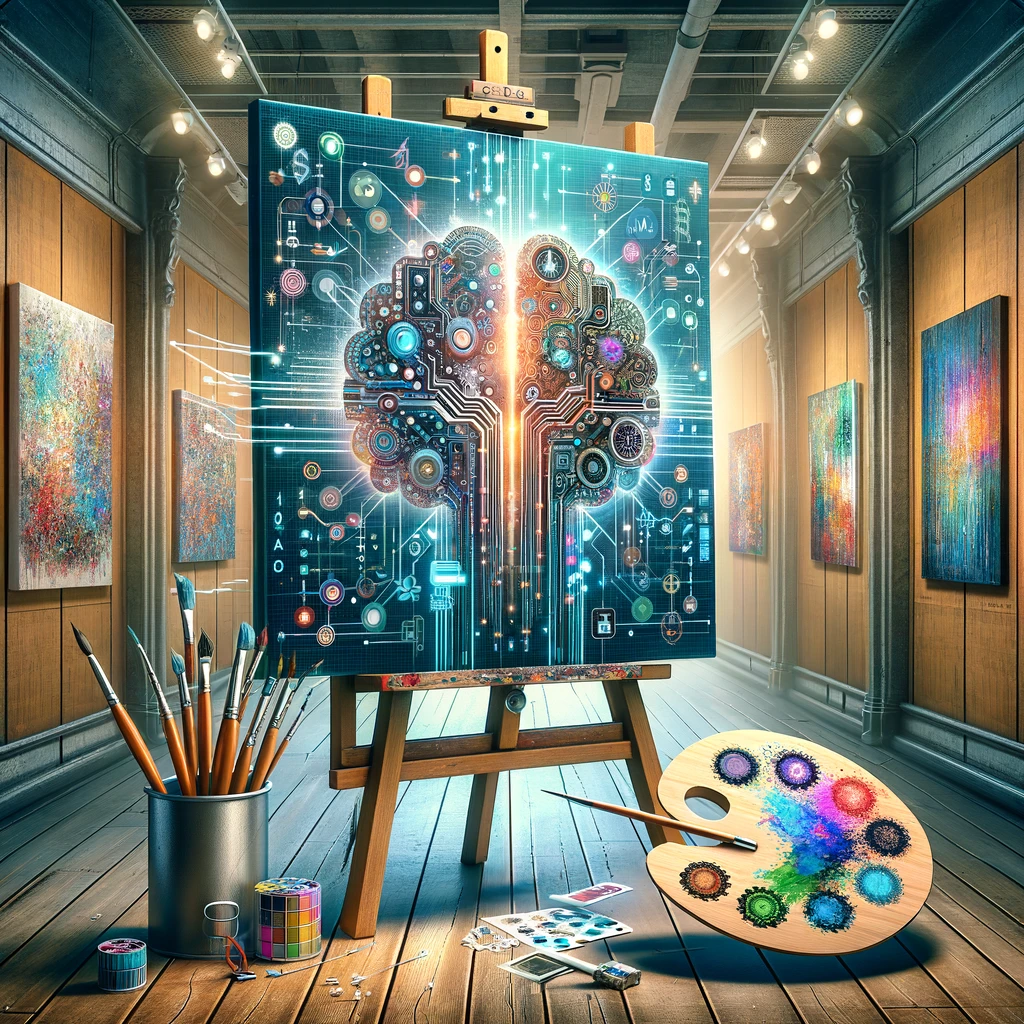Introduction
The fusion of artificial intelligence (AI) with the art world marks a pivotal shift in the way we conceive creativity and artistic expression. This intersection is not merely about the adoption of new tools; it represents a profound evolution in the creation and appreciation of art. Machine learning, a subset of AI characterized by algorithms that learn from data, is at the forefront of this revolution, crafting a new wave of visual creativity that challenges our traditional notions of the artist and the muse.
The aim of this article is to explore the dimensions in which AI, particularly through machine learning, influences visual creativity. It seeks to unravel how these technologies are not only tools for creation but also collaborators in the artistic process, opening up new possibilities for personalized art and reshaping the art industry at large.
The Evolution of Artistic Tools
The history of art is also the history of the tools that have made art possible. From the ochre and charcoal of prehistoric cave paintings to the rich pigments of the Renaissance, and onto the digital brushes and software of today’s digital artists, each era’s technological advancements have been mirrored in its art.
The introduction of AI into this lineage marks the latest chapter in this ongoing story of innovation. The transition began with simple computer-assisted designs and has evolved to sophisticated machine learning algorithms capable of generating complex, original artworks. These milestones are not just technical achievements; they represent a fundamental shift in the creative process, expanding the artist’s palette to include not just new colors or materials, but entirely new ways of thinking about and creating art.
Understanding Machine Learning in Art
Before delving deeper into how machine learning is reshaping art, it’s crucial to understand what machine learning is. At its core, machine learning involves algorithms that analyze data, learn from it, and then make decisions or predictions based on what they have learned. This ability to learn from data makes machine learning uniquely suited to artistic creation, where it can identify patterns, styles, and techniques across vast datasets of existing artwork and then apply these learnings to create new, original works.
In the realm of art, several types of AI are particularly influential:
- Neural Networks: Mimicking the structure of the human brain, neural networks can learn aesthetic patterns and replicate or innovate upon them.
- Deep Learning: A subset of machine learning, deep learning uses large neural networks to analyze and interpret complex data structures, making it ideal for processing and generating sophisticated visual art.
- Generative Adversarial Networks (GANs): GANs involve two neural networks contesting with each other to create and critique art, leading to remarkably original and high-quality artworks.
These technologies are not just tools in the traditional sense; they represent a new form of digital brush, one that learns from each stroke and can contribute its own vision to the artwork.
Machine Learning’s Impact on Visual Creativity
The advent of machine learning in art has given rise to generative art, a form where the creation is not entirely by the artist’s hand but emerges from the collaboration between human intention and algorithmic randomness. This collaboration opens up new artistic possibilities, enabling the exploration of complex patterns and forms that would be beyond the reach of human artists alone.
Generative art is just the beginning. Machine learning algorithms also enable the creation of personalized and customized art by analyzing data on individual preferences or even emotional states. This capability is transforming the art world, making it possible to create artworks that resonate on a deeply personal level with the viewer.
